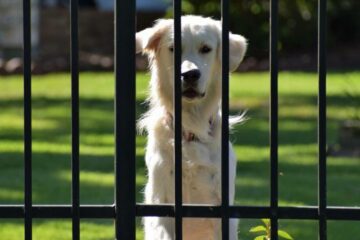Are Boxelder Bugs Poisonous to Dogs? Are Boxelder Bugs Harmful to Dogs?
Are boxelder bugs poisonous to dogs? Are boxelder bugs harmful to dogs? In this article, we’re going to fill you in on everything you need to know about both of these questions. That includes what you need to do if a boxelder bites your dog, and also the command that will keep your dog safe in any future interactions.
We’ll also cover other important things you should know about these insects. We’ll answer what are boxelder bugs, where are boxelder bugs found, what boxelder bugs look like, and where are boxelder bugs most active. Finally, we’ll instruct you on how to get rid of boxelder bugs naturally. Keep reading!
Are Boxelder Bugs Poisonous to Dogs?

Boxelder bugs are not poisonous to dogs. While these bugs may be a nuisance due to their large numbers, especially in the autumn, they are not known to be harmful or toxic to dogs if ingested. However, any unusual behavior following the ingestion of a boxelder bug should be addressed with a veterinarian.
Boxelder Bugs Poisonous to Dogs
Boxelder bugs do not contain any known toxins that could harm your dog. If your dog happens to eat one or a few, it’s unlikely to cause any serious harm. However, large quantities could potentially cause mild gastrointestinal upset due to the bug’s hard exoskeleton which can be difficult for dogs to digest.
Symptoms could include vomiting or diarrhea. If you notice these symptoms persist, consult your vet.
Are Boxelder Bugs Dangerous to Dogs?
While boxelder bugs are not poisonous to dogs, they can still pose potential risks. Dogs with a curious nature may be inclined to chase, play with, or eat these bugs, which can lead to a choking hazard, particularly in smaller dogs or puppies.
Moreover, as with any insect, there’s a small chance of an allergic reaction. If your dog exhibits signs of distress, difficulty breathing, swelling, or any other unusual behavior after interaction with a boxelder bug, seek veterinary care immediately.
How to Train the “Leave It” Command
Training your dog to respond to the “leave it” command can be incredibly beneficial, particularly in situations where they might be tempted to eat boxelder bugs or anything else.
- Hold a treat in both hands. Close your fist around one of the treats and present it to your dog, saying “leave it.”
- Ignore the behaviors your dog exhibits to get to the treat. This includes licking, pawing, and barking.
- Once your dog stops trying, give them the treat from your other hand. This step is crucial as it ensures your dog doesn’t get rewarded from the hand that they are being told to leave.
- Repeat until your dog moves away from the first fist when you say “leave it.”
- Only give the command once. If you repeat the command, your dog will learn that it does not have to respond on the first command.
These steps will get your dog to stop bothering boxelder bugs, but it’s important to remember that the underlying behavioral issues (prey drive, curiosity, overexcitement, etc.) that were causing all of this to begin with will still be present. And until you address those, any positive changes you see are only going to be temporary.
“Well, how do I make these changes last?”
By getting your dog to truly choose to follow your direction, that’s how. I tried many times to write out how you can do that before deciding it made more sense to just link you to the free video series that explains it better than I’d ever be able to.
The series is by a man named Dan who is one of the world’s leading dog obedience trainers. In it, he teaches you how to put an end to things like your dog eating boxelder bugs and all other misbehavior using his fast and easy-to-follow methods.
In the first video, Dan will reveal to you why the two most common methods of dog training only doom you to failure. You can watch the video now by clicking here. Follow the proven system he’ll show you in his series and you’ll never have to spend another second worrying about your dog bothering boxelder bugs ever again!
Are Boxelder Bugs Harmful to Dogs?

Boxelder bugs are not harmful to dogs. Even if eaten, these insects do not carry any known toxins that could adversely affect your pet’s health. However, it’s important to monitor your dog’s behavior following ingestion, as excessive quantities or an allergic reaction may cause some issues.
Understanding Boxelder Bugs
Boxelder bugs, often recognized by their striking black and red coloring, are common in many parts of the United States. These insects are typically found in large numbers around boxelder trees, their preferred food source.
While they are more of a nuisance to homeowners than a threat, their tendency to invade homes in large numbers during colder months often raises concerns about their potential impact on pets.
Potential Risks of Boxelder Bugs to Dogs
While boxelder bugs are not poisonous or toxic to dogs, they can pose potential risks. Dogs that are prone to chasing and eating insects might choke on these bugs, especially smaller dogs or puppies. There’s also a minor chance of an allergic reaction, although this is rare.
Managing Your Dog’s Interaction with Boxelder Bugs
Even though boxelder bugs pose little threat, it’s always a good idea to manage your pet’s interaction with them. Teach your dog to ignore these bugs, or any insects for that matter, using the command “leave it.” Learn how to do it in the first section. This can help avoid potential problems such as choking or an unnecessary trip to the vet.
Taking care of this now will also ensure your pup stays safe during encounters with other insects. You then won’t have to worry about your dog eating stink bugs, your dog eating Japanese beetles, your dog eating slugs, a fire ant biting your dog, a cockroach biting your dog, or your dog eating ladybugs because you’ll know they’ll keep their distance.
When to Seek Veterinary Care
While it’s uncommon for a dog to have adverse reactions from a boxelder bug, it’s important to watch for signs of distress such as difficulty breathing, excessive drooling, vomiting, or diarrhea. If your dog exhibits any of these symptoms after eating a boxelder bug or any insect, it’s advisable to seek immediate veterinary care.
Do Boxelder Bugs Bite Dogs?
Boxelder bugs do not bite dogs. These insects primarily feed on plant juices and do not possess mouthparts capable of piercing skin. While their presence might be a nuisance, they don’t pose a direct harm to your pet.
- Feeding Habits of Boxelder Bugs: Boxelder bugs feed on soft plant tissues, particularly from the boxelder tree, using their mouthparts designed for sucking plant juices. This means they don’t have the necessary adaptations to bite or sting animals, including dogs.
- Potential for Irritation: While boxelder bugs are not capable of biting, they can sometimes cause minor irritation if they crawl on your dog. This is due to tiny, rough parts on their legs which might feel uncomfortable on your pet’s sensitive skin, but this is generally not a concern.
- Boxelder Bugs and Indoor Infestation: Boxelder bugs can become a nuisance if they infest your home in large numbers, especially during cooler months when they seek shelter. However, this is more of a hassle for homeowners than a direct threat to dogs.
- Keeping Your Dog Safe: Although boxelder bugs aren’t a direct threat, it’s still important to maintain a clean and safe environment for your pet. Regular grooming and pest control can keep your dog comfortable and minimize the chance of any pest-related issues. Learning the “leave it” command in the first section will also help.
In conclusion, boxelder bugs do not bite dogs. They might cause slight discomfort if they crawl on your pet, but they don’t present a significant risk to dogs. Regular grooming and pest control are the best ways to keep your pet comfortable and safe.
What Are Boxelder Bugs?
Boxelder bugs are insects native to North America, named for their primary habitat and food source – the boxelder tree. They are black with distinct red or orange markings and are most active during warmer months when they breed and feed.
Where Are Boxelder Bugs Found?
Boxelder bugs are primarily found in North America. Their range extends across the continent, from the east coast to the west and from Canada down into Mexico. They are particularly prevalent in areas where boxelder trees, their primary food source, are abundant. Boxelder bugs may also inhabit maple and ash trees, expanding their potential habitats.
What Do Boxelder Bugs Look Like?
Boxelder bugs are relatively small insects, measuring about 0.5 inches in length. They are dark black or brown with striking red or orange markings along the edge of their bodies and across their wings. Their bodies are elongated and somewhat flattened, with six legs and two antennae.
Boxelder bugs are often mistaken for beetles due to their coloration and shape, but they are actually true bugs, classified in the insect order Hemiptera.
When Are Boxelder Bugs Most Active?
Boxelder bugs become most active during the warmer months of spring and summer when they emerge from their overwintering sites to feed and reproduce. During these seasons, they can often be seen in large congregations, particularly around the base of boxelder trees or sunning themselves on the sides of buildings.
In the fall, they seek out cracks and crevices in buildings and homes to overwinter, making them a nuisance for many homeowners during this time.
Despite their potentially large numbers and tendency to invade homes, boxelder bugs are primarily a nuisance pest. They do not bite or sting, do not transmit diseases, and are not known to cause significant damage to buildings or vegetation.
However, their presence can be quite off-putting, and large infestations may require professional pest control services to manage. Learn a command that will keep your dog safe around them by going back to the first section.
How to Get Rid of Boxelder Bugs Naturally
You can get rid of boxelder bugs naturally by maintaining cleanliness in your yard, sealing cracks and crevices in your home, using diatomaceous earth, and introducing natural predators. These methods are safe, eco-friendly, and don’t pose a risk to pets.
- Maintain Cleanliness: A clean yard with minimal clutter reduces hiding places for boxelder bugs. Regularly clean up dead leaves, branches, and any unnecessary debris around your property to discourage these bugs.
- Seal Cracks and Crevices: Boxelder bugs can enter your home through small openings. Ensure all cracks, crevices, and gaps in your walls, windows, and doors are sealed. This is an effective, chemical-free way to prevent infestations.
- Use Diatomaceous Earth: This naturally occurring substance is lethal to many pests, including boxelder bugs. It works by penetrating their exoskeleton and dehydrating them. Sprinkle it around your home’s perimeter and other areas where you’ve seen these bugs. It’s non-toxic to dogs and other pets.
- Introduce Natural Predators: Some birds and insects are natural predators of boxelder bugs. Attracting these species to your yard can help control the bug population. Examples include ladybugs, spiders, and various types of birds.
In conclusion, natural methods for getting rid of boxelder bugs include maintaining cleanliness, sealing potential entry points in your home, using diatomaceous earth, and attracting natural predators. These methods are effective, environmentally friendly, and safe for your pets. Teaching your dog the “leave it” command (from the first section) will also help.
I’m sure you’re ready to have this whole problem behind you, so I’ll let you get started on things now. Good luck with all of this, and thanks for reading our article “Are Boxelder Bugs Poisonous to Dogs? Are Boxelder Bugs Harmful to Dogs?”





